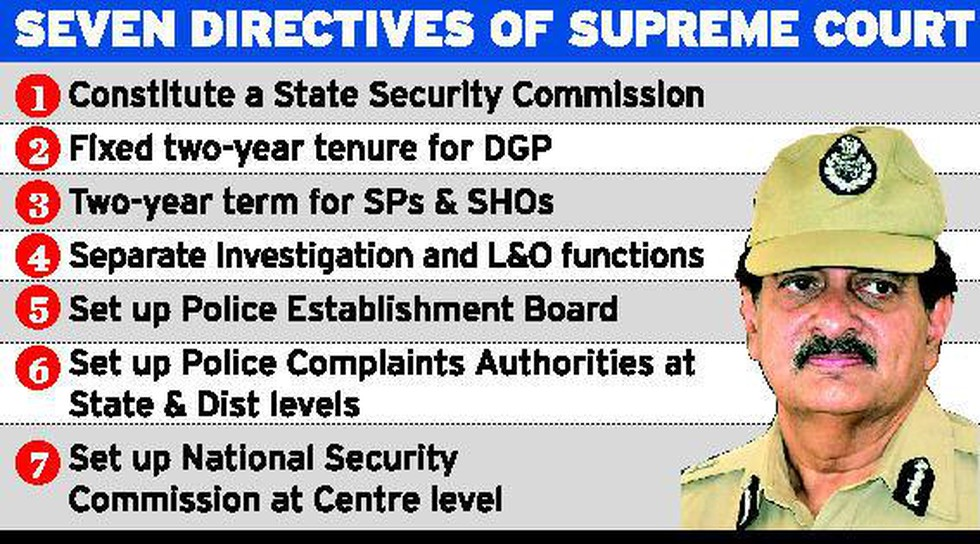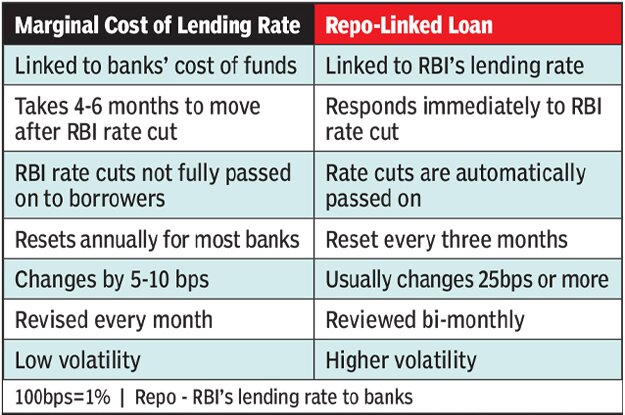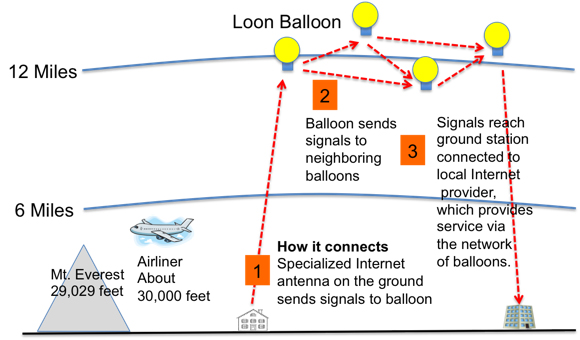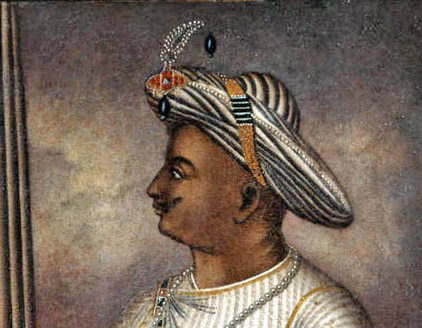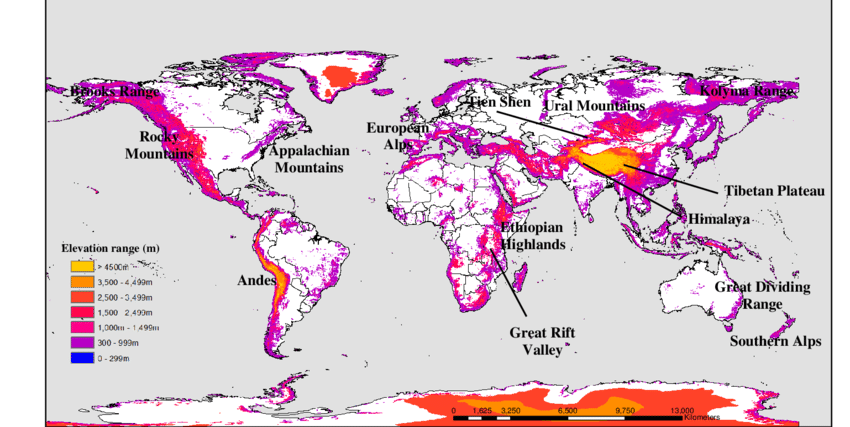Internal Security
Police Reforms
Why in News
In a recent reply in the Parlaiment, the government disclosed that between 1st April and 30th November, 2015, 25,357 cases were registered under police category which included 111 deaths in police custody, 330 cases of custodial torture and 24,916 in others.
- This data again lays emphasis on the need to make police accountable and carry out police reforms.
Key Points
- Police Reforms (Meaning):
- Police reforms aim to transform the values, culture, policies and practices of police organizations.
- It envisages police to perform their duties with respect for democratic values, human rights and the rule of law.
- It also aims to improve how the police interact with other parts of the security sector, such as the courts and departments of corrections, or executive, parliamentary or independent authorities with management or oversight responsibilities.
- Police come under the state list of schedule 7 of the Indian constitution.
- Committees/Commissions on Police Reforms:
- Issues Concerning Police Forces:
- Colonial Legacy: The Police Act of 1861 was legislated by the British right after the revolt of 1857 to bring in efficient administration of police in the country and to prevent any future revolts.
- This meant that the police were to always comply with those in power.
- Accountability to the Political Executives vs Operational Freedom: The Second Administrative Reforms Commission (ARC-2007) has noted that political control has been abused in the past by the political executive to unduly influence police personnel, and have them serve personal or political interests.
- Psychological Pressure: While improvements in pay scale and promotions are necessary aspects of police reforms, little has been spoken about reforms needed at the psychological level.
- In the Indian police force, the lower ranks of police personnel are often verbally abused by their superiors or they work in inhuman conditions.
- This non-harmonious work environment ultimately affects their relationship with the public.
- Public Perception: The Second ARC has noted that police-public relations is in an unsatisfactory State because people view the police as corrupt, inefficient, politically partisan and unresponsive.
- Further, citizens in general fear going to a police station or dealing with the lower ranks of the police forces.
- Overburdened Force: While the sanctioned police strength was 181 police per lakh persons in 2016, the actual strength was 137 police.
- This is way too low when compared with the United Nations’ recommended standard of 222 police per lakh persons.
- Further, a high percentage of vacancies within the police forces exacerbates an existing problem of overburdened police personnel.
- Constabulary Related Issues: The constabulary constitutes 86% of the State police forces and has wide-ranging responsibilities.
- Infrastructural Issues: Modern policing requires strong communication support, state-of the-art or modern weapons, and a high degree of mobility.
- However, CAG audit reports of year 2015-16, have found shortages in weaponry with state police forces.
- For example, Rajasthan and West Bengal had shortages of 75% and 71% respectively in required weaponry with the state police.
- Also, the Bureau of Police Research and Development has also noted a 30.5% deficiency in stock of required vehicles with the state forces.
- Colonial Legacy: The Police Act of 1861 was legislated by the British right after the revolt of 1857 to bring in efficient administration of police in the country and to prevent any future revolts.
Suggestions
- Modernisation of Police Forces: The Modernisation of Police Forces (MPF) scheme was initiated in 1969-70 and has undergone several revisions over the years.
- However, there is a need to fully utilize the finances sanctioned by the government.
- MPF scheme envisages:
- Procurement of modern weapons
- Mobility of police forces
- Logistics support, upgradation of police wireless, etc
- A National satellite network
- Need For Political Will: The Supreme Court in the landmark Prakash Singh case (2006) gave seven directives where considerable work in police reforms is still needed.
- However, due to the lack of political will these directives were not implemented in letter and spirit in many states.
- Revamping Criminal Justice System: Along with Police reforms, there is a need to reform the criminal justice system too. In this context, the recommendations of the Menon and Malimath Committees can be implemented. Some of the key recommendations are as follows:
- Creation of a fund to compensate victims who turn hostile from the pressure of culprits.
- Setting up separate authority at the national level to deal with crimes threatening the country's security.
- A complete revamp of the entire criminal procedure system.
Indian Economy
External Benchmarks Lending Rate
Why in News
According to a recent RBI report on ‘Monetary transmission in India’, the share of outstanding loans linked to External Benchmarks Lending Rate (EBLR - like repo rate), increased from as low as 2.4% during September 2019 to 28.5% during March 2021.
- This increase in EBLR linked lending will contribute to significant improvement in monetary policy transmission.
- However, still 71.5% of outstanding loans are Internal Benchmark Lending Rate (IBLR- like base rate and MCLR) linked loans, which continues to impede the monetary policy transmission.
Note
- Transmission of Monetary Policy: The transmission of monetary policy describes how changes made by the Reserve Bank of India (RBI) to the policy rate flow through to economic activity (like lending) and inflation.
- Repo Rate: It is also known as the benchmark interest rate and is the rate at which the RBI lends money to the banks for a short term. Here, the central bank purchases security.
Key Points
- Internal Benchmark Lending Rate (IBLR):
- The Internal Benchmark Lending Rates are a set of reference lending rates which are calculated after considering factors like the bank's current financial overview, deposits and non performing assets (NPAs) etc. BPLR, Base rate, MCLR are the examples of Internal Benchmark Lending Rate.
- Benchmark Prime Lending Rate (BPLR):
- BPLR was used as a benchmark rate by banks for lending till June 2010.
- Under it, bank loans were priced on the actual cost of funds.
- However, the BPLR was subverted, resulting in an opaque system. The bulk of wholesale credit (loans to corporate customers) was contracted at sub-BPL rates and it comprised nearly 70% of all bank credit.
- Under this system, banks were subsidising corporate loans by charging high interest rates from retail and small and medium enterprise customers.
- Base Rate:
- Loans taken between June 2010 and April 2016 from banks were on base rate.
- During the period, base rate was the minimum interest rate at which commercial banks could lend to customers.
- Base rate is calculated on three parameters — the cost of funds, unallocated cost of resources and return on net worth.
- Hence, the rate depended on individual banks and they changed it whenever their cost of funds and other parameters changed.
- Marginal Cost of Lending Rate (MCLR):
- It came into effect in April 2016. It is a benchmark lending rate for floating-rate loans. This is the minimum interest rate at which commercial banks can lend.
- This rate is based on four components—the marginal cost of funds, negative carry on account of cash reserve ratio, operating costs and tenor premium.
- MCLR is linked to the actual deposit rates. Hence, when deposit rates rise, it indicates the banks are likely to hike MCLR and lending rates are set to go up.
- Issues Related to IBLR Linked Loans:
- The problem with the IBLR regime was that when RBI cut the repo and reverse repo rates, banks did not pass the full benefits to borrowers.
- In the IBLR Linked Loans, the interest rate has many variables including bank’s spread, their current financial overview, deposits and non performing assets (NPAs) etc.
- Due to this, such internal benchmarks did little to facilitate any swift change in interest rates as per changes in RBI repo rate policy.
- The opacity in interest rate setting processes under internal benchmark regime hinders transmission to lending rates.
- EBLR and Its Benefits:
- About:
- To ensure complete transparency and standardization, RBI mandated the banks to adopt a uniform external benchmark within a loan category, effective 1st October, 2019.
- Unlike MCLR which was internal system for each bank, RBI has offered banks the options to choose from 4 external benchmarking mechanisms:
- The RBI repo rate
- The 91-day T-bill yield
- The 182-day T-bill yield
- Anny other benchmark market interest rate as developed by the Financial Benchmarks India Pvt. Ltd.
- T-Bill or Treasury bills are money market instruments issued by the Government of India as a promissory note with guaranteed repayment at a later date.
- Financial Benchmarks India Pvt. Ltd was recognised by the Reserve bank of India as an independent Benchmark administrator on 2nd July 2015.
- Benefits:
- Banks are free to decide the spread over the external benchmark.
- However, the interest rate must be reset as per the external benchmark at least once every three months.
- Being an external system, this means any policy rate cut decision will reach borrowers faster.
- The adoption of external benchmarking will make the interest rates transparent.
- The borrower will also know the spread or profit margin for each bank over the fixed interest rate making loan comparisons easier and more transparent.
- Banks are free to decide the spread over the external benchmark.
- About:
Way Forward
- Higher interest rates offered by competing saving instruments such as small saving schemes and debt mutual fund schemes have impeded transmission especially during the easing cycle.
- Thus, the government should synchronise the Fiscal policy with the monetary policy in the long-term.
Science & Technology
Internet Through High Altitude Balloons
Why in News
Recently, the US has planned to transmit the Internet to the people in Cuba via high-altitude balloons when their government has blocked access.
- There is an ongoing protest in Cuba against long standing restrictions on rights, scarcity of food and medicines, and the government’s poor response to the Covid-19 pandemic.
Key Points
- High Altitude Balloons for Internet:
- They are commonly known as Loon Balloons as the first High Altitude Balloon for providing internet was used under Project Loon.
- They are made of the commonplace plastic polyethylene and are the size of a tennis court.
- They are powered by solar panels and controlled by software on the ground.
- While up in the air, they act as floating cell towers, transmitting internet signals to ground stations and personal devices.
- They float 60,000 to 75,000 feet, above the Earth, well above commercial jetliner routes.
- They last for well over 100 days in the stratosphere before being returned to earth.
- Each balloon can serve thousands of people. But they had to be replaced every five months or so because of the harsh conditions in the stratosphere. And the balloons can be difficult to control.
- Requirements:
- Network:
- Beyond the balloons themselves, it needed network integration with a telecom to provide service and some equipment on the ground in the region.
- Permission:
- It also needs permission from local regulators.
- Network:
- Significance:
- Cheap:
- By allowing phone companies to expand their coverage where needed, the balloons are intended to offer countries a cheaper option than laying cables or building cell towers.
- Access to Remote Areas:
- They are able to bring Internet access to remote and rural areas poorly served by existing provisions, and to improve communication during natural disasters to affected regions.
- Cheap:
- Challenges:
- Need Unused Band:
- It would need an unused band of spectrum, or radio frequencies, to transmit a connection, and spectrum use is typically controlled by national governments.
- Anyone trying this would have to find a free block of spectrum that wouldn’t be interfered with.
- Uneconomical:
- Balloon- or drone-powered networks aren’t likely to be economical over the long term.
- Operational Challenges:
- Developing algorithms to appropriately map balloon positions, determining a good strategy to deal with unpleasant weather and addressing the concern of relying on the non-renewable resources are among other challenges.
- Need Unused Band:
Project Loon
- It was started in 2011 by Alphabet, the parent company of Google. It was a network of stratospheric balloons designed to bring Internet connectivity to rural and remote areas.
- It shut down that project in January 2020 as it wasn’t commercially viable.
- Prior to the shutdown, Loon balloons had been providing service in mountainous areas in Kenya through a partnership with a local telecom.
- The service also helped provide wireless communications in Puerto Rico in the aftermath of Hurricane Maria.
Science & Technology
NASA’s New Spacecraft: NEA Scout
Why in News
Recently, National Aeronautics and Space Administration (NASA) has announced that its new spacecraft, named Near-Earth Asteroid Scout or NEA Scout, has completed all required tests and has been safely tucked inside the Space Launch System (SLS) rocket.
Key Points
- About NEA Scout:
- Near-Earth Asteroid Scout, or NEA Scout, is a miniaturized spacecraft, known as a CubeSat, developed under NASA’s Advanced Exploration Systems (AES) Program.
- AES pioneers new approaches for rapidly developing prototype systems, demonstrating key capabilities, and validating operational concepts for future human missions beyond low-Earth orbit.
- Its main mission is to fly by and collect data from a near-Earth asteroid.
- It will take about two years to cruise to the asteroid and will be about 93 million miles away from Earth during the asteroid encounter.
- It will also be America’s first interplanetary mission using a special solar sail propulsion.
- So far, spacecraft have been using solar energy to power them and execute critical functions.
- This will be the first time that a spacecraft uses it as wind to generate thrust and move forward.
- It is one of several payloads that will hitch a ride on Artemis I, which is expected to be launched in November, 2021.
- Artemis I will be an uncrewed testflight of the Orion spacecraft and SLS rocket.
- It is the first in a series of increasingly complex missions that will enable human exploration to the Moon and Mars.
- NEA Scout launches to the Moon in 2021 with a fleet of other small satellites aboard Artemis 1.
- At the Moon, NEA Scout will deploy its 86-square-meter solar sail and slowly spiral out of lunar orbit.
- It will travel to a near-Earth asteroid and perform a slow fly-by, capturing up-close images of the surface.
- Near-Earth Asteroid Scout, or NEA Scout, is a miniaturized spacecraft, known as a CubeSat, developed under NASA’s Advanced Exploration Systems (AES) Program.
- Significance:
- The images gathered by NEA Scout will provide critical information on the asteroid’s physical properties such as orbit, shape, volume, rotation, the dust and debris field surrounding it, plus its surface properties.
- The spacecraft will pave the way for the Solar Cruiser, which will use a sail 16 times larger when it flies in 2025.
- Studying Near-Earth asteroids can help in developing strategies for reducing the potential damage caused in the event of an impact.
- Data can be used to determine what is required to reduce risk, increase effectiveness, and improve the design and operations of robotic and human space exploration.
- Near-Earth Objects (NEOs):
- NEOs are comets and asteroids pushed by the gravitational attraction of nearby planets into orbits which allow them to enter the Earth’s neighbourhood.
- These objects are composed mostly of water ice with embedded dust particles.
- NEOs occasionally approach close to the Earth as they orbit the Sun.
- NASA’s Center for Near-Earth Object Study (CNEOS) determines the time and distances of these objects, when their approach to the Earth is close, through the Asteroid Watch Widget.
Asteroids
- These are rocky objects that orbit the Sun, much smaller than planets. They are also called minor planets.
- According to NASA, 9,94,383 is the count of known asteroids, the remnants from the formation of the solar system over 4.6 billion years ago.
- Asteroids are divided into three classes:
- First, those found in the main asteroid belt between Mars and Jupiter, which is estimated to contain somewhere between 1.1-1.9 million asteroids.
- The second group is that of trojans, which are asteroids that share an orbit with a larger planet.
- The third classification is Near-Earth Asteroids (NEA), which have orbits that pass close to the Earth. Those that cross the Earth’s orbit are called Earth-crossers.
- More than 10,000 such asteroids are known, out of which over 1,400 are classified as Potentially Hazardous Asteroids (PHAs).
- PHAs are currently defined based on parameters that measure the asteroid’s potential to make threatening close approaches to the Earth.
- Specifically, all asteroids with an Earth Minimum Orbit Intersection Distance (MOID) of 0.05 au or less and an absolute magnitude (H) of 22.0 or less are considered PHAs.
Indian History
Tipu Sultan
Why in News
Recently, naming a garden on Tipu Sultan in Mumbai sparked a controversy.
Key Points
- Brief Profile:
- Born in November 1750, Tipu Sultan was Haidar Ali’s son and a great warrior, also known as the Tiger of Mysore.
- He was a well educated man fluent in Arabic, Persian, Kanarese and Urdu.
- Mysore had grown in strength under the leadership of powerful rulers like Haidar Ali (ruled from 1761 to 1782) and his famous son Tipu Sultan (ruled from 1782 to 1799).
- Tipu introduced a number of administrative innovations during his rule, including his coinage, a new Mauludi lunisolar calendar, and a new land revenue system which initiated the growth of Mysore silk industry.
- Embracing western military methods like artillery and rockets alongside traditional Indian weapons including war elephants, he ensured his forces could overwhelm his Indian rivals and match the British armies sent against him.
- Maintenance of Armed Forces:
- He organised his army on the European model with Persian words of command.
- Though he took the help of the French officers to train his soldiers, he never allowed them (French) to develop into a pressure group.
- He was well aware of the importance of a naval force.
- In 1796, he set up a Board of Admiralty and planned for a fleet of 22 battleships and 20 large frigates.
- He established three dockyards at Mangalore, Wajedabad and Molidabad. However, his plans did not fructify.
- He organised his army on the European model with Persian words of command.
- Fought Against Marathas:
- In 1767, Tipu commanded a corps of cavalry against the Marathas in the Carnatic (Karnataka) region of western India, and he fought against the Marathas on several occasions between 1775 and 1779.
- Role in Anglo-Mysore Wars:
- British saw Haidar and Tipu as ambitious, arrogant and dangerous – rulers who had to be controlled and crushed.
- Four wars were fought with Mysore (1767-69, 1780-84, 1790-92 and 1799).
- 1767-69: Treaty of Madras.
- 1780-84: Treaty of Mangalore.
- 1790-92: Treaty of Seringapatam.
- 1799: Subsidiary Alliance.
- Only in the last – the Battle of Seringapatam – did the Company ultimately win a victory. Tipu Sultan was killed defending his capital Seringapatam.
- Mysore was placed under the former ruling dynasty of the Wodeyars and a subsidiary alliance was imposed on the state.
- Other Related Points:
- He was also a patron of science and technology and is credited as the ‘pioneer of rocket technology’ in India.
- He wrote a military manual (Fathul Mujahidin) explaining the operation of rockets.
- Tipu was a great lover of democracy and a great diplomat who gave his support to the French soldiers at Seringapatam in setting up a Jacobin Club in 1797.
- Tipu himself became a member of the Jacobin Club and allowed himself to be called Citizen Tipu.
- He planted the Tree of Liberty at Seringapatam.
- He was also a patron of science and technology and is credited as the ‘pioneer of rocket technology’ in India.
Subsidiary Alliance
- In 1798, it was introduced by Wellesley in India, the ruler of the allying Indian state was compelled to pay a subsidy for the maintenance of British army in return for getting protection from the British against their enemies.
- Those native princes or rulers who would enter into the Subsidiary Alliance were not free to declare war against any other power or enter into negotiations without the consent of the British.
- The Subsidiary Alliance was a policy of non-interference in the internal affairs of the allied state, but this was a promise seldom kept by the British.
- The payment of the arbitrarily-fixed and artificially-bloated subsidy invariably disrupted the economy of the state and impoverished its people.
- On the other hand, the British could now maintain a large army at the cost of the Indian states.
- They controlled the defence and foreign relations of the protected ally, and had a powerful force stationed at the very heart of his lands.
- Lord Wellesley signed his first Subsidiary Treaty with the Nizam of Hyderabad in 1798.
- The Nawab of Avadh was forced to sign a Subsidiary Treaty in 1801.
- Peshwa Baji Rao II (Maratha) signed the Subsidiary Treaty at Bassein in 1802.
Agriculture
Dragon Fruit
Why in News
In June 2021, India exported its first consignment of dragon fruit from a farmer of Maharashtra to Dubai in the United Arab Emirates.
Key Points
- About:
- Introduction:
- The dragon fruit (Hylocereus undatus) is indigenous to the Americas. It is a member of the cacti family.
- It is also known as ‘Pitaya’, ‘Pitahaya’, strawberry pear, noblewoman and queen of the night throughout the world. In India, it is also known as ‘Kamalam’.
- Climatic Condition:
- It is hardy and grows in diverse climatic conditions with varied soils, especially in the semi-arid and arid regions of India.
- It prefers slightly acidic soil and can tolerate some salts in soil too.
- Flowering and fruiting of dragon fruits coincide with the monsoon season in India (June to November).
- Features:
- Its flowers are hermaphrodites (male and female organs in the same flower) in nature and open at night.
- The plant sustains yield for more than 20 years, is high in nutraceutical properties (having medicinal effects) and good for value-added processing industries.
- It is a rich source of vitamins and minerals.
- Introduction:
- Popularity in India:
- The dragon fruit was introduced to home gardens in India in the 1990s.
- The low maintenance and high profitability of dragon fruits has attracted the farming community throughout India.
- This has led to a steep increase in dragon fruit cultivation in Maharashtra, Karnataka, Andhra Pradesh, West Bengal, Telangana, Tamil Nadu, Odisha, Gujarat and the Andaman and Nicobar Islands, as well as in many north eastern states.
- The country produces approximately 12,000 tonnes of the fruit every year.
- Related Issues:
- High Investment: Dragon fruit is a climber that needs support and hence farmers need to invest around Rs. 3.5 lakh per acre in infrastructure.
- Drip irrigation also adds cost to the initial investment.
- Issues in Flowering: Generally, sunburn is a common problem in semi-arid and arid tracts and it can be managed by providing 25-30% shade either by planting shade-providing trees (such as moringa, sesbania and Melia dubia) or installing artificial shade nets during the harsh summer months.
- High Investment: Dragon fruit is a climber that needs support and hence farmers need to invest around Rs. 3.5 lakh per acre in infrastructure.
- Government Initiatives:
- The Government of Maharashtra has taken the initiative to promote dragon fruit cultivation in different areas of the state by providing good quality planting material and subsidies for its cultivation through the Mission on Integrated Development of Horticulture (MIDH).
- MIDH is a Centrally Sponsored Scheme for the holistic growth of the horticulture sector covering fruits, vegetables, root & tuber crops, mushrooms, spices, flowers, aromatic plants, coconut, cashew, cocoa and bamboo.
- The Ministry of Agriculture and Farmers Welfare is implementing MIDH with effect from 2014-15.
Indian Polity
Parliament Sessions
Why in News
Recently, the Monsoon session of Parliament has begun, after the reshuffling of the Council of ministers and the Cabinet committees.
Key Points
- Sessions of Parliament:
- The summoning of Parliament is specified in Article 85 of the Constitution.
- The power to convene a session of Parliament rests with the Government.
- The decision is taken by the Cabinet Committee on Parliamentary Affairs which is formalised by the President, in whose name MPs (Members of Parliament) are summoned to meet for a session.
- India does not have a fixed parliamentary calendar. By convention (i.e. not provided by the Constitution), Parliament meets for three sessions in a year.
- The longest, Budget Session (1st session), starts towards the end of January, and concludes by the end of April or first week of May.
- The second session is the three-week Monsoon Session, which usually begins in July and finishes in August.
- Winter Session (3rd session), is held from November to December.
- Summoning of Parliament:
- Summoning is the process of calling all members of the Parliament to meet. The President summons each House of the Parliament from time to time. The gap between two sessions of the Parliament cannot exceed 6 months, which means the Parliament meets at least two times in one year.
- Adjournment:
- Adjournment terminates the sitting of the House which meets again at the time appointed for the next sitting. The postponement may be for a specified time such as hours, days or weeks.
- If the meeting is terminated without any definite time/date fixed for the next meeting, it is called Adjournment sine die.
- The power of adjournment as well as adjournment sine die lies with the presiding officer (Speaker or Chairman) of the House.
- Prorogation:
- Prorogation is the end of session and not the dissolution of the house (in case of Lok Sabha, as Rajya Sabha does not dissolve).
- It is done by the President of India.
- Quorum:
- Quorum refers to the minimum number of the members required to be present for conducting a meeting of the house.
- The Constitution has fixed one-tenth strength as quorum for both Lok Sabha and Rajya Sabha.
- Thus, to conduct a sitting of Lok Sabha, there should be at least 55 members present while to conduct a sitting of Rajya Sabha, there should be at least 25 members present.
- Joint Session of Parliament (Article 108):
- The Constitution of India provides for the joint sitting of the Parliament’s two Houses, the Lok Sabha and the Rajya Sabha, in order to break any deadlock between the two.
- The joint sitting is called by the President. Such a session is presided over by the Speaker, and in his/her absence, by the Deputy Speaker of the Lok Sabha.
- In the absence of both, it is presided over by the Deputy Chairman of the Rajya Sabha.
- If any of the above are not present, any other member of the Parliament can preside by consensus of both the Houses.
Geography
Changing Landscape of Alps: Europe
Why in News
A recent study by the ETH technical university in Zurich, Switzerland shows that climate change has dramatically altered the Swiss Alp landscape.
Key Points
- Important Findings:
- Melting glaciers have created more than 1,000 new lakes across the mountains.
- The inventory of Swiss Glacial lakes showed that almost 1,200 new lakes have formed in formerly glaciated regions of the Swiss Alps since the end of the Little Ice Age around 1850 and around 1,000 of them still exist today.
- Glaciers in the Swiss Alps are in steady decline, losing a full 2% of their volume last year alone.
- Even if the world were to fully implement the 2015 Paris Agreement, two-thirds of the Alpine glaciers will likely be lost.
- The Paris Agreement is a legally binding international treaty on climate change. It was adopted by 196 Parties at COP 21 in Paris, in December 2015.
- Melting glaciers have created more than 1,000 new lakes across the mountains.
- Alps:
- About:
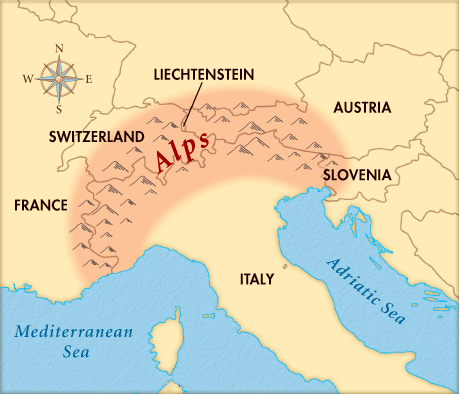
- The Alps emerged during the Alpine orogeny (mountain-building event), an event that began about 65 million years ago as the Mesozoic Era was drawing to a close.
- Alps are young fold mountains with rugged relief and high conical peaks.
- They are the most prominent of western Europe’s physiographic regions. Some 750 miles long and more than 125 miles wide at their broadest point between Garmisch-Partenkirchen, Germany, and Verona, Italy, the Alps cover more than 80,000 square miles.
- The Alps extend north from the subtropical Mediterranean coast near Nice, France, to Lake Geneva before trending east-northeast to Vienna, Austria. There they touch the Danube River and meld with the adjacent plain.
- Because of their arclike shape, the Alps separate the marine west-coast climates of Europe from the Mediterranean areas of France, Italy, and the Balkan region.
- Countries Covered:
- The Alps form part of France, Italy, Switzerland, Germany, Austria, Slovenia, Croatia, Bosnia and Herzegovina, Montenegro, Serbia, and Albania.
- Only Switzerland and Austria can be considered true Alpine countries.
- Important Peaks:
- Mont Blanc is the highest peak in the Alps and in Europe, reaching a lofty 4,804 meters above sea level. It is located in the Graian Alps and lies within France, Switzerland, and Italy.
- Monte Rosa is a massif (a compact group of mountains) consisting of several peaks. The highest peak in this range (Dufourspitze) has an elevation of 4,634 meters, claiming the title of Switzerland’s highest peak.
- Dom, which is located near Monte Rosa, Dom stands at 4,545 meters and is known as one of the “easier” tall peaks in the Alps to summit because of it’s straightforward routes.
- Other major peaks are Liskamm, Weisshorn, Matterhorn, Dent Blanche, Grand Combin etc.
- About:
Major Mountain Ranges of the World
Important Facts For Prelims
Indian Labour Conference
Why in News
Recently, the Bharatiya Mazdoor Sangh (labour union) wrote to the Prime Minister asking him to convene the Indian Labour Conference (ILC).
- It argued that since Indian Parliament has ratified Convention No 144 of the International Labour Organisation, it is now India’s legal obligation to hold the ILC in order to strengthen the tripartite mechanism.
Key Points
- About:
- ILC also known as the ‘labour parliament’ of the country formed on the lines of International Labour Conference is the apex level tripartite (Government, Employers and Workers) consultative committee in the Ministry of Labour & Employment.
- International Labour Conference also known as International Parliament of Labour is a conference organized by ILO every year.
- Each member State is represented by a delegation consisting of two government delegates, an employer delegate, a worker delegate, and their respective advisers.
- The first meeting of the ILC (then called Tripartite National Labour Conference) was held in 1942 and so far a total of 46 Sessions have been held.
- The most recent session of which was held in 2015.
- The agenda of the ILC is finalised by the Standing Labour Committee which is again a tripartite body after detailed discussions.
- ILC also known as the ‘labour parliament’ of the country formed on the lines of International Labour Conference is the apex level tripartite (Government, Employers and Workers) consultative committee in the Ministry of Labour & Employment.
- Function:
- To advise the Government on the issues concerning the working class of the country.
- Members:
- Central Trade Union Organisations, Central Organisations of employers, all State Governments and Union Territories and Central Ministries/Departments concerned with the agenda items, are the members of the ILC.
- Some Government Initiatives for the Working Class:
International Labour Organisation
- It is the only tripartite United Nation (UN) agency. It brings together governments, employers and workers of 187 member States (India is a member), to set labour standards, develop policies and devise programmes promoting decent work for all women and men.
- Received the Nobel Peace Prize in 1969.
- Established in 1919 by the Treaty of Versailles as an affiliated agency of the League of Nations.
- Became the first affiliated specialized agency of the UN in 1946.
- Headquarters: Geneva, Switzerland
Convention No 144 of the ILO
- Convention 144 of the year 1976 which is also known as the Convention on Tripartite Consultation (International Labour Standards), promotes application of an essential principle on which the International Labour Organization (ILO) was founded which is:
- Tripartite social dialogue in the development and implementation of international labour standards.
- Tripartism in respect to international labour standards promotes a national culture of social dialogue on wider social and economic issues.
Important Facts For Prelims
Monkey B Virus
Why in News
Recently, China has reported the first human infection case with Monkey B virus (BV).
Key Points
- About:
- Monkey B virus is an alphaherpesvirus enzootic (endemic) in macaques and it was initially isolated in 1932.
- Alphaherpesviruses are pathogens or neuroinvasive viruses that establish lifelong infections in the peripheral nervous system of humans and many other vertebrates.
- B virus is also commonly referred to as herpes B, herpesvirus simiae, and herpesvirus B.
- B virus can survive for hours on surfaces, particularly when moist.
- Monkey B virus is an alphaherpesvirus enzootic (endemic) in macaques and it was initially isolated in 1932.
- Transmission:
- The infection can be transmitted via direct contact and exchange of bodily secretions of monkeys and has a fatality rate of 70% to 80%.
- Human-to-human Transmission: Till date, only one case has been documented of an infected person spreading B virus to another person.
- Symptoms:
- The first indications of B virus infection are typically flu-like symptoms such as fever and chills, muscle ache, fatigue and headache, following which an infected person may develop small blisters in the wound or area on the body that came in contact with the monkey.
- In the later stage, the virus can lead to the loss of muscle coordination and neurological damage.
- Treatment:
- Currently, there are no vaccines that can protect against B virus infection.
- Timely antiviral medications could help in reducing the risk to life.


